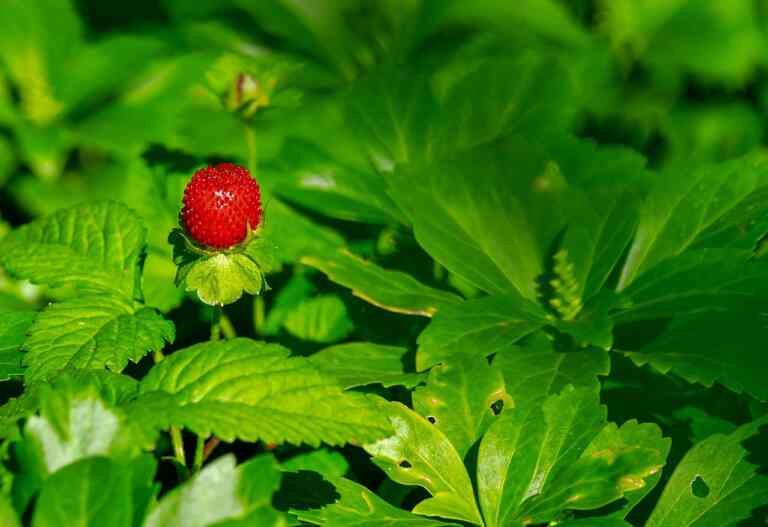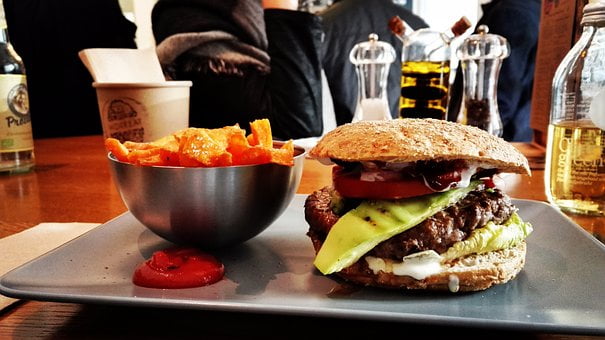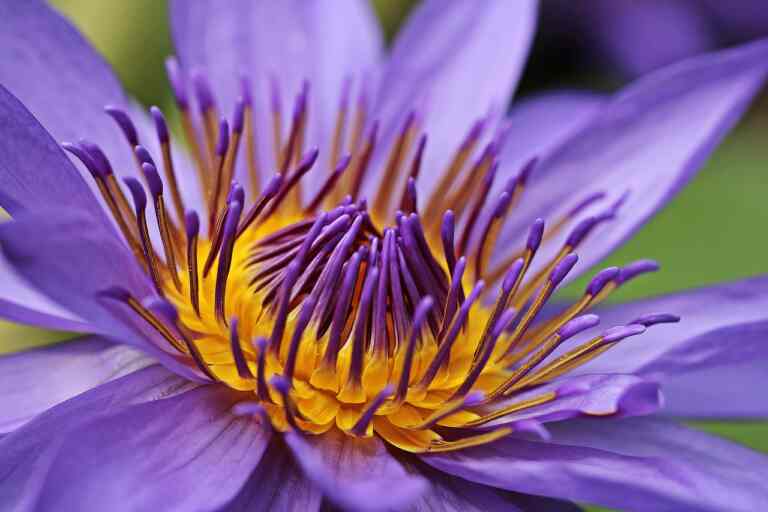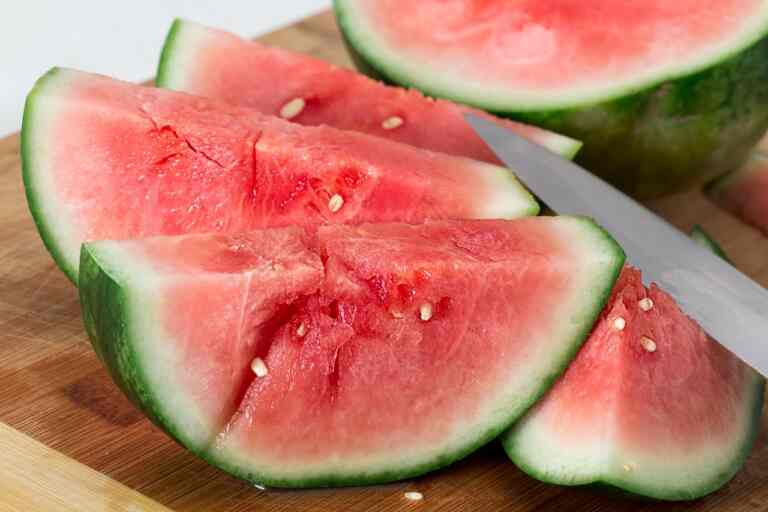Can Rose Petals Be Eaten?
Can Rose Petals Be Eaten? Yes, rose petals are edible and safe to eat, provided they are sourced from organic, pesticide-free roses. In fact, they have been used in culinary practices for centuries, adding a delicate flavor and aroma to various dishes.
However, it’s essential to ensure that the roses you consume have not been treated with chemicals or pesticides, as these can be harmful if ingested. Always wash the petals thoroughly before using them in food or beverages. Rose petals are commonly used in salads, desserts, teas, and as decorative garnishes for both visual appeal and flavor enhancement.
Exploring the Culinary Use of Rose Petals
Roses, those delicate blooms adored for their beauty and fragrance, have long graced the gardens of romantics. Yet, beyond their ornamental value, these petals have found a place in kitchens around the world, adding a unique touch to a variety of dishes. This culinary exploration of rose petals ventures into the realms of taste, aroma, and creativity, uncovering the myriad ways in which these floral wonders can elevate the dining experience.
- Rose Petals in Ancient Cuisine: A Historical Perspective Tracing the roots of rose petal usage in ancient civilizations and religious rituals.
- A Symphony of Flavors: The Taste Profile of Rose Petals Delving into the subtle sweetness and floral notes that roses bring to culinary creations.
- Harvesting and Selecting Rose Petals: The Art of Picking the Perfect Bloom Guidance on identifying edible roses and best practices for harvesting fresh, pesticide-free petals.
- Culinary Crafts: Recipes That Bloom with Rose Petals A showcase of diverse recipes, from rose petal-infused desserts to savory delicacies, highlighting their versatility.
- Beyond the Plate: Rose Petals in Beverages and Mixology Exploring the role of rose petals in teas, cocktails, and other beverages, adding sophistication to the sip.
- Preserving the Essence: Making Rose Petal Extracts, Jams, and Syrups Step-by-step instructions on crafting rose petal extracts, jams, and syrups for culinary experiments.
- The Art of Garnish: Decorating with Rose Petals Creative ideas on using rose petals as garnishes, enhancing visual appeal and aroma of dishes.
- Health Benefits and Cautions: Rose Petals as Nutraceuticals Examining the potential health benefits of consuming rose petals and precautions to consider.
- Cultural Significance: Rose Petals in Global Cuisines A journey through various cultures, exploring how different cuisines incorporate rose petals in their traditional dishes.
- The Future of Floral Gastronomy: Innovations with Rose Petals A glimpse into the evolving culinary landscape, including modern techniques and experimental uses of rose petals in avant-garde cuisine.
Embark on this aromatic culinary adventure, where the delicate allure of rose petals meets the artistry of gastronomy, promising a sensory experience like no other.
A Delicate Delight or Culinary Gimmick?
The incorporation of rose petals into culinary creations has sparked debates among chefs, food enthusiasts, and critics alike. Are rose petals a genuine delicacy, adding a touch of elegance and sophistication to dishes, or are they merely a culinary gimmick, designed for visual appeal rather than taste? This culinary exploration aims to dissect the essence of rose petals in cuisine, evaluating their significance, flavor impact, and cultural context.
- Sensory Elegance: Understanding the Aesthetic Appeal of Rose Petals Examining the visual allure of rose petals and their role in elevating the presentation of dishes.
- Flavorful Poetry: Unraveling the Taste Palette of Rose Petals Delving into the delicate flavors of rose petals, from subtle sweetness to nuanced floral notes, and their ability to enhance the overall taste profile.
- Historical Roots: Rose Petals as Culinary Heritage Tracing the historical use of rose petals in ancient cuisines and religious rituals, highlighting their cultural significance.
- Culinary Versatility: Rose Petals Beyond the Obvious Exploring inventive uses of rose petals in both sweet and savory dishes, showcasing their versatility in various cuisines.
- The Science of Taste: Do Rose Petals Enhance Flavor or Mere Illusion? Examining scientific studies and expert opinions on whether rose petals genuinely enhance the taste of dishes or create a placebo effect.
- Cultural Symbolism: Rose Petals in Celebrations and Festivities Exploring the symbolic use of rose petals in cultural ceremonies, weddings, and festivals, shedding light on their emotional significance.
- Critics’ Corner: Debunking Myths and Misconceptions Addressing common misconceptions and criticisms surrounding the use of rose petals in modern cuisine.
Is Eating Them Beneficial?
Rose petals, with their delicate appearance and enchanting fragrance, have been consumed for centuries in various cultures. While their culinary appeal is evident, the question arises: are they more than just a feast for the eyes and senses? This exploration delves into the potential health benefits of consuming rose petals, shedding light on their nutritional content and their role in promoting well-being.
- Floral Nutrients: Unveiling the Chemical Composition of Rose Petals Analyzing the vitamins, minerals, and antioxidants found in rose petals, exploring their nutritional value.
- Skin and Beauty: Rose Petals as a Source of Natural Radiance Investigating the skincare benefits of rose petals, including their role in soothing skin irritations and enhancing complexion.
- Digestive Health: Rose Petals as a Digestive Aid Exploring the digestive properties of rose petals, from easing indigestion to promoting gut health.
- Calming the Mind: Rose Petals in Herbal Remedies and Teas Discussing the calming effects of rose petals on the nervous system, their use in herbal remedies, and stress-relieving teas.
- Heart Health: Potential Cardiovascular Benefits of Rose Petals Examining studies and research suggesting that certain compounds in rose petals might contribute to heart health and lower blood pressure.

Incorporating Rose Petals into Modern Dishes
In the ever-evolving world of culinary arts, innovative chefs and home cooks alike are constantly seeking unique ingredients to elevate their creations. Rose petals, with their subtle flavor and captivating aroma, have emerged as a trendy ingredient in modern cuisine. This exploration delves into creative and contemporary methods of incorporating rose petals into a variety of dishes, adding a touch of elegance and complexity to the dining experience.
- Petals on the Plate: Rose Petals as Visual and Flavorful Garnishes Utilizing rose petals to enhance the visual appeal of dishes, from salads to desserts, creating an aesthetic masterpiece.
- Floral Infusions: Rose Petal-Infused Oils, Vinegars, and Syrups Exploring techniques to infuse oils, vinegars, and syrups with rose petals, adding a subtle floral note to dressings, sauces, and desserts.
- Savory Surprises: Rose Petals in Main Courses and Appetizers Innovative recipes incorporating rose petals in savory dishes, such as rose petal-stuffed ravioli, aromatic curries, and floral-infused sauces.
- Sweet Sensations: Rose Petals in Desserts and Pastries Elevating desserts to a new level with rose petal ice creams, macarons, cakes, and delicate pastries, exploring the perfect balance of sweetness and floral notes.
- Tea Time Elegance: Rose Petals in Herbal Teas and Beverages Creating soothing herbal teas and refreshing beverages using dried rose petals, combining health benefits with delightful flavors.
Health Benefits and Risks of Consuming Rose Petals
The consumption of rose petals, once a practice rooted in ancient traditions, has resurfaced as a culinary trend. While they add an elegant touch to dishes, it’s crucial to understand both their potential health benefits and associated risks. This exploration delves into the nuanced aspects of consuming rose petals, offering insights into their positive impacts on health, while also addressing potential risks and precautions.
- Nutritional Riches: Exploring the Nutrient Profile of Rose Petals Examining the vitamins, minerals, and antioxidants found in rose petals, highlighting their nutritional value for overall well-being.
- Digestive Aid: Rose Petals and Gut Health Exploring the digestive benefits of rose petals, including their mild laxative properties and role in promoting a healthy digestive system.
- Anti-Inflammatory Potential: Rose Petals as Natural Anti-inflammatories Investigating the anti-inflammatory compounds in rose petals and their potential in managing inflammatory conditions and reducing joint pain.
- Skin and Beauty: Rose Petals in Skincare and Haircare Discussing the use of rose petals in skincare products and DIY treatments, highlighting their potential to soothe skin irritations and enhance hair health.
- Mood Enhancement: The Aromatherapy of Rose Petals Exploring the calming effects of rose petal aromatherapy, discussing its potential to reduce stress, anxiety, and promote relaxation.
Traditional and Cultural Uses of Rose Petals in Cooking
The tradition of incorporating rose petals into cooking is as diverse as it is ancient, with cultures around the world weaving these delicate blossoms into their culinary tapestry. In this exploration, we venture into the rich heritage of traditional and cultural uses of rose petals in cooking, uncovering the myriad ways different societies have embraced this floral treasure.
- Middle Eastern Delights: Rose Petals in Desserts and Beverages Exploring the use of rose petals in Middle Eastern sweets like Turkish delight and Persian baklava, as well as in beverages like rose water lemonade, offering a delicate balance of sweetness and floral essence.
- Indian Splendor: Rose Petals in Sweets and Spices Delving into the vibrant use of rose petals in Indian cuisine, from the famous Gulab Jamun to fragrant biryanis, and their inclusion in spice blends like garam masala, adding a touch of aroma and flavor.
- Mediterranean Elegance: Rose Petals in Pastries and Confections Uncovering the Mediterranean tradition of using rose petals in pastries such as French macarons, Italian cannoli, and Greek loukoumades, highlighting their contribution to the region’s sweet delicacies.
- Chinese and Southeast Asian Charms: Rose Petals in Teas and Soups Examining the Chinese and Southeast Asian use of rose petals in teas like Chinese rose tea and Vietnamese lotus tea, as well as in soups and broths, infusing a subtle floral note into these savory dishes.
- Mexican Flair: Rose Petals in Traditional Beverages Discovering the Mexican tradition of infusing rose petals into beverages like agua de jamaica, a hibiscus tea with rose petals, and their use in traditional celebrations such as Dia de los Muertos.
- European Elegance: Rose Petals in Jams, Jellies, and Liqueurs Exploring European uses of rose petals in preserves like English rose petal jam, Turkish delight, and the creation of delightful liqueurs such as rosolio in Italy.
- North African Essence: Rose Petals in Tagines and Desserts Investigating the North African culinary tradition of incorporating rose petals in tagines, adding a fragrant dimension to savory dishes, and in desserts like Moroccan pastilla, creating a delightful contrast of flavors.
- Indigenous Wisdom: Rose Petals in Native American Culinary Practices Acknowledging the cultural significance of roses in Native American traditions, where rose petals have been used in teas, infusions, and ceremonial foods, symbolizing spirituality and connection with nature.
- Culinary Rituals: Rose Petals in Ceremonial and Festive Foods Exploring the ritualistic use of rose petals in various cultures during weddings, religious ceremonies, and festivals, where they adorn foods and beverages as symbols of love, purity, and celebration.
- Preserving Traditions: Passing Down the Art of Using Rose Petals Reflecting on the importance of preserving these culinary traditions, ensuring that the art of using rose petals is passed down through generations, enriching the cultural heritage of diverse societies.
Through this exploration, we find that the use of rose petals in cooking is not just a culinary choice but a celebration of cultural identity and heritage. As we embrace these traditions, we honor the wisdom of our ancestors and the timeless beauty of nature, creating a fragrant and flavorful legacy for generations to come.
Conclusion
In the realm of culinary arts, the integration of rose petals stands as a testament to the fusion of tradition and innovation. Through our exploration, we have unraveled the delicate allure and the myriad possibilities that rose petals offer in modern cuisine. From their historical significance to their versatile presence in contemporary dishes, rose petals have proven to be more than just a visual delight—they are a culinary treasure waiting to be discovered.
Incorporating rose petals into cuisine isn’t merely a nod to aesthetic elegance; it’s a celebration of the senses. Their subtle sweetness, combined with nuanced floral notes, elevates dishes, imparting a unique character that tantalizes taste buds and entices the olfactory senses. From desserts that dance on the palate to savory creations that challenge traditional boundaries, rose petals have found a revered place in the hearts of chefs and home cooks alike.
Moreover, our exploration has shed light on the potential health benefits of rose petals. Rich in nutrients, they offer not only gastronomic pleasure but also contribute to overall well-being. From promoting digestive health to potentially reducing inflammation and enhancing skin radiance, the benefits of incorporating rose petals into one’s diet are diverse and promising.
However, this culinary journey also comes with a note of caution. As with any ingredient, moderation and mindfulness are key. Individuals must be aware of potential allergies and sensitivities, embracing these floral wonders with awareness and respect for their unique properties.
In the end, the incorporation of rose petals into modern cuisine is a celebration of creativity and cultural richness. It’s an invitation to explore, experiment, and savor the delicate delights that nature has to offer. As chefs continue to innovate and home cooks embrace the artistry of gastronomy, the legacy of rose petals in the culinary world will undoubtedly flourish, enriching our dining experiences and reminding us of the profound beauty found in both nature and the creations inspired by it. So, let us continue to explore, appreciate, and indulge in the exquisite world of rose petals, where culinary artistry and nature’s grace harmoniously converge.
Related Posts
This article is reviewed by Russel, before publishing. If you have any doubt, you can contact us or consult with your nearby doctor. Remember, in medical matters, there is no same advice, cure, and medicine for all.







